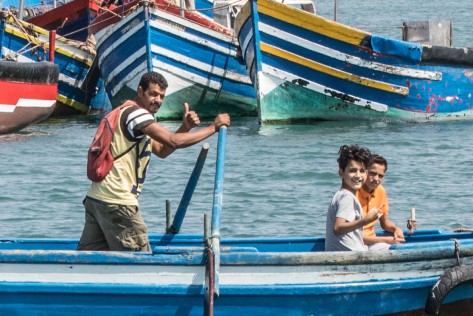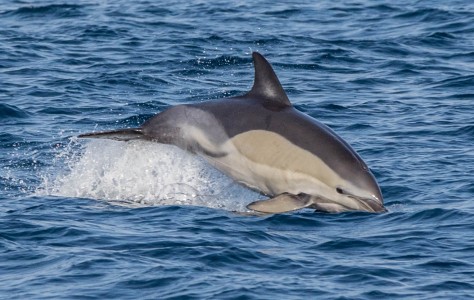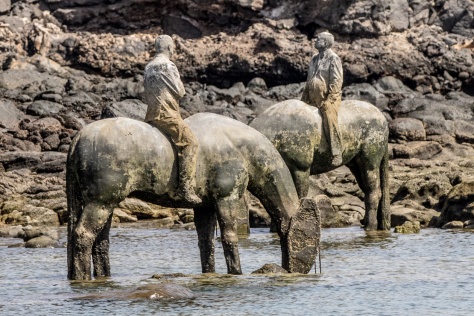
In the intertidal zone in the port of Arrecife, at low tide, we noticed this temporarily installed sculpture by Jason de Caires Taylor. ”The Rising Tide is a sculpture depicting four riders on their saddles, horses whose heads are oil drilling pumps, reflecting the great threat that hangs over the planet and especially on the seas and Oceans” (Centers for Arts, Culture and Tourism (CACT), Link)


When sailing arround the world, many sailors use the trade winds to cross the oceans. However, wind and waves from the back for days and days are tiring for the helmsman – or challenging for the autopilot that steers the ship.

50 Boats and 200 fishermen in a big game fishing contest. In two days they caught three marlins (swordfish) weighting between 50 and 100 kilograms and released the fish (catch and release). Only one Mahi Mahi (Goldmakrele) was not released – but grilled.

Entering and leaving Rabat harbor – a tidal river channel – is an experience no sailor will ever forget. Care has to be exercised when a strong swell is running at low tide as large swells may break between the breakwaters at the harbor entrance. We entered with little swell at high tide, safely following the Marina pilot boat. The channel was full with swimmers, jet skis and rowing boats. People were enthusiastically greeting us, not seeing sailing yachts very often.





The tidal river Bouregreg flows through Rabat and offers opportunities for cliff jumpers and soccers.
Rabat is the capital of Morocco, a beautiful and busy city:

The Little Egret (Egretta garzetta, Seidenreiher) feeds in the tidal wetlands of Rabat’s city river Bouregreg , but also does not hesitate to search food in the city garbage

During low tide fiddler crabs (Uca pugilator, Sandfiedlerkrabbe) abandon their holes in the muddy wetlands. They ingest particless of mud. Males have one extra large pincer.




We did again encounter bottlenose dolphins (Tümmler) – a school of thirty or more followed us for half an hour. Only few species of birds visit the sailor on the open ocean, a hundred miles or more away from land. One of those are Cory’s Shearwater (Puffinus diomedea, Sepiasturmtaucher). They breed on land, but live on the ocean. As in North France, Northern Gannets (Morus bassanus, Basstölpel) occasionally showed up. By the way, it was a brilliant passage from Rabat, Morocco to the Canary Islands. Good winds, moderate atlantic swell and four dark nights without moon, but with a clear sky and the milky way.


Cory’s Shearwater (Puffinus diomedea, Sepiasturmtaucher):




Northern Gannets (Morus bassanus, Basstölpel):




After weeks of cold water at the Atlantic coasts of France, Spain and northern Portugal, the Algarve, with its nearly mediteranien climate, invites to snorkeling and diving.
Carribean and Pacific Sailing









































